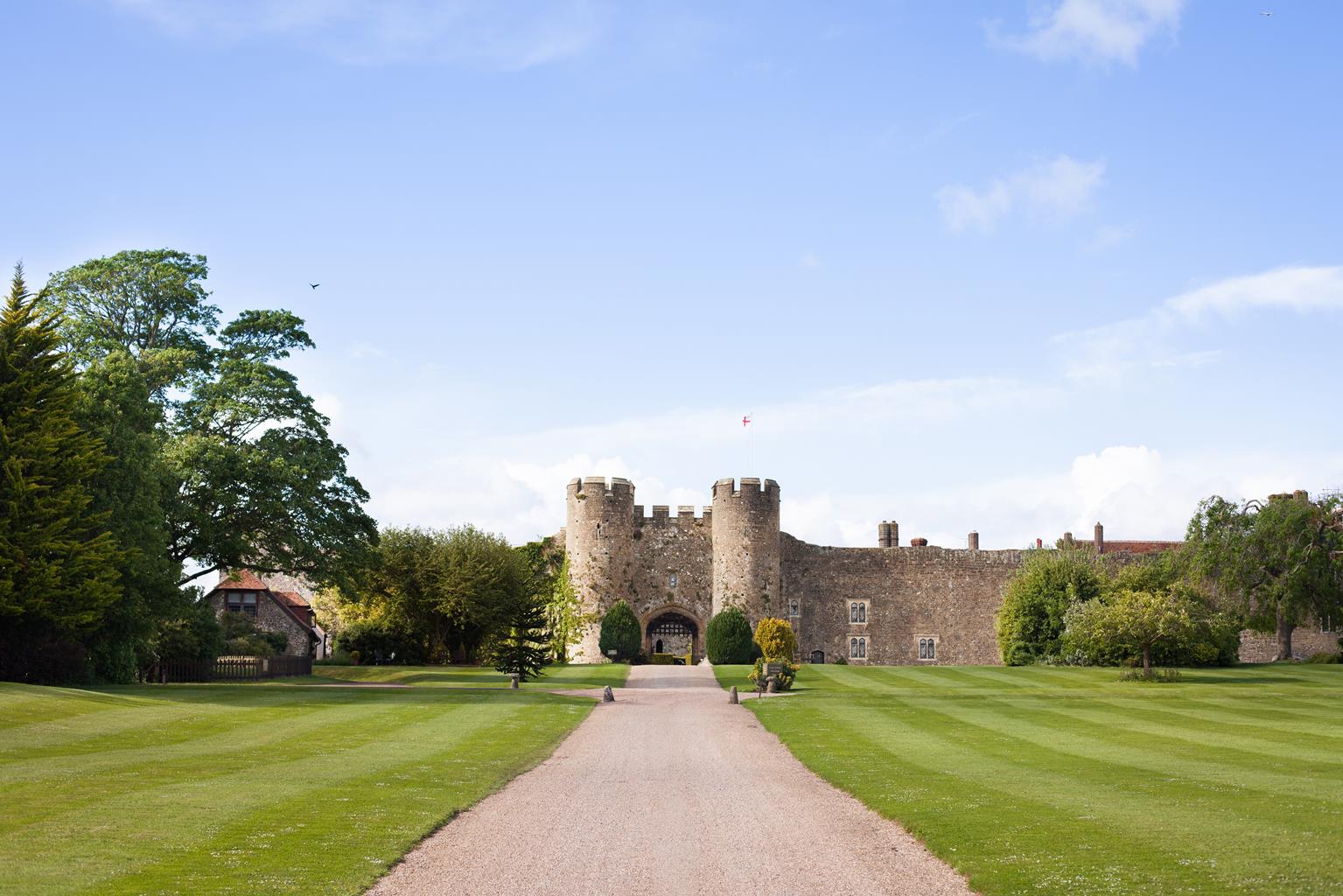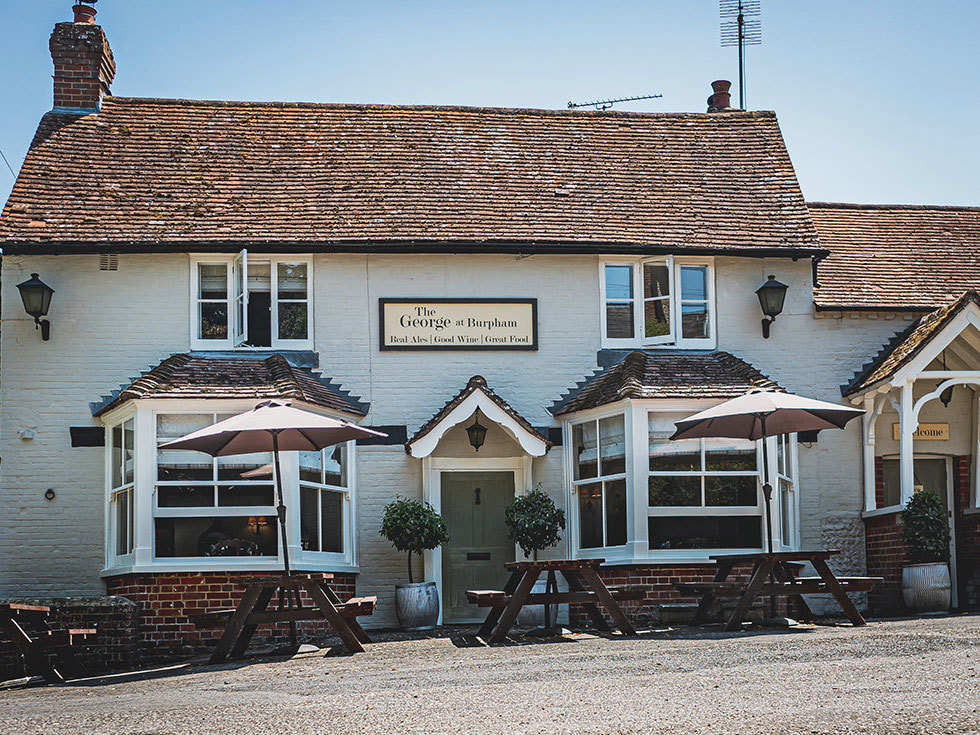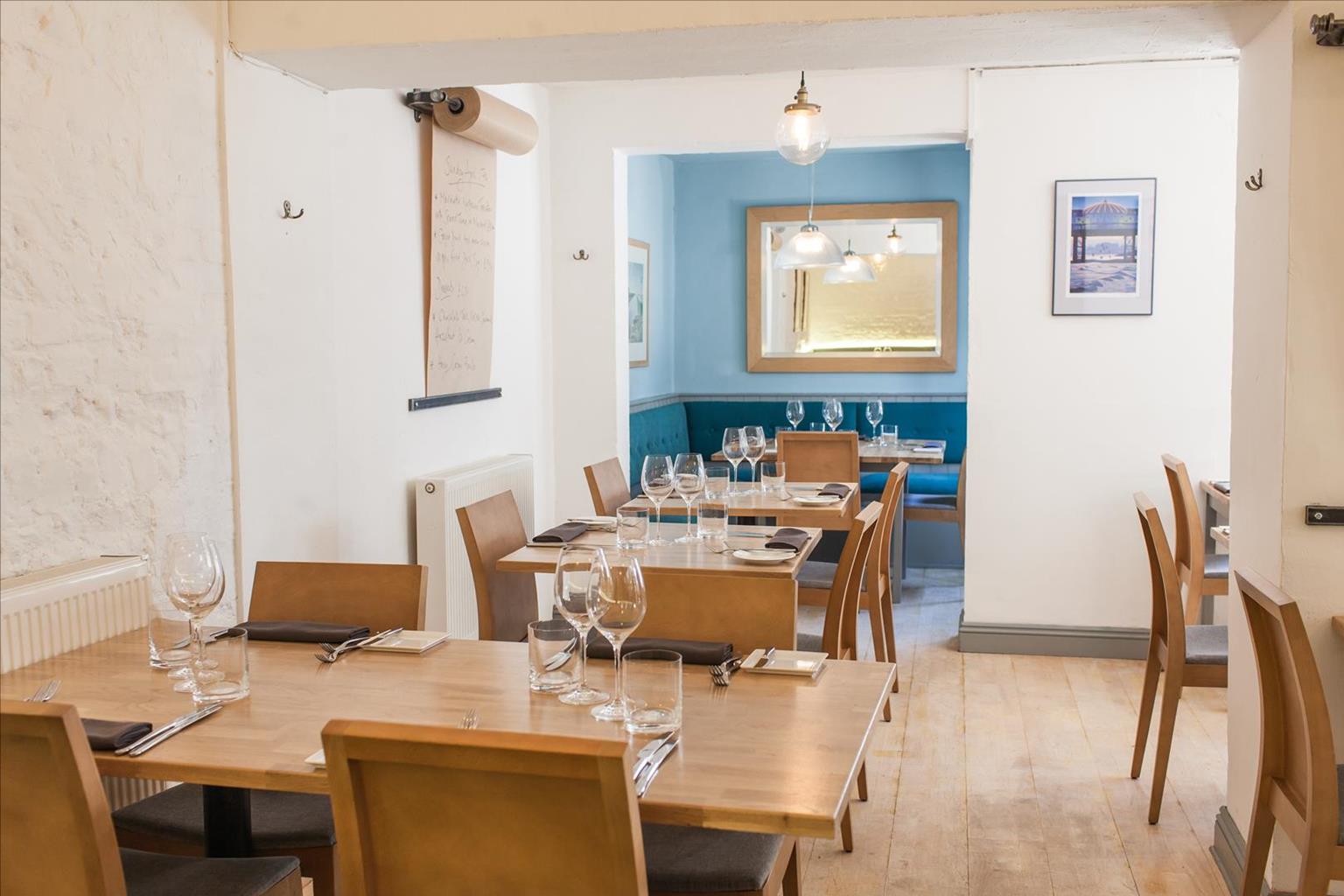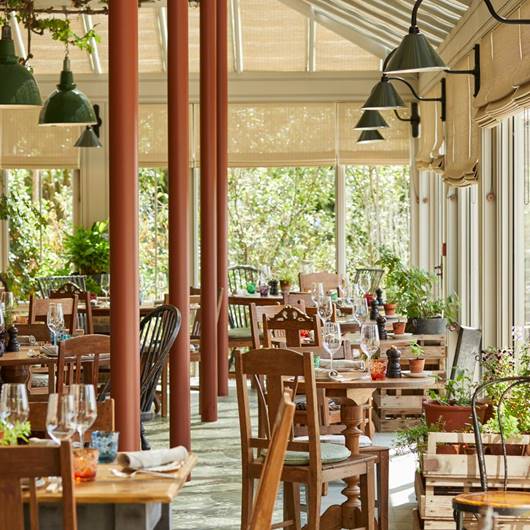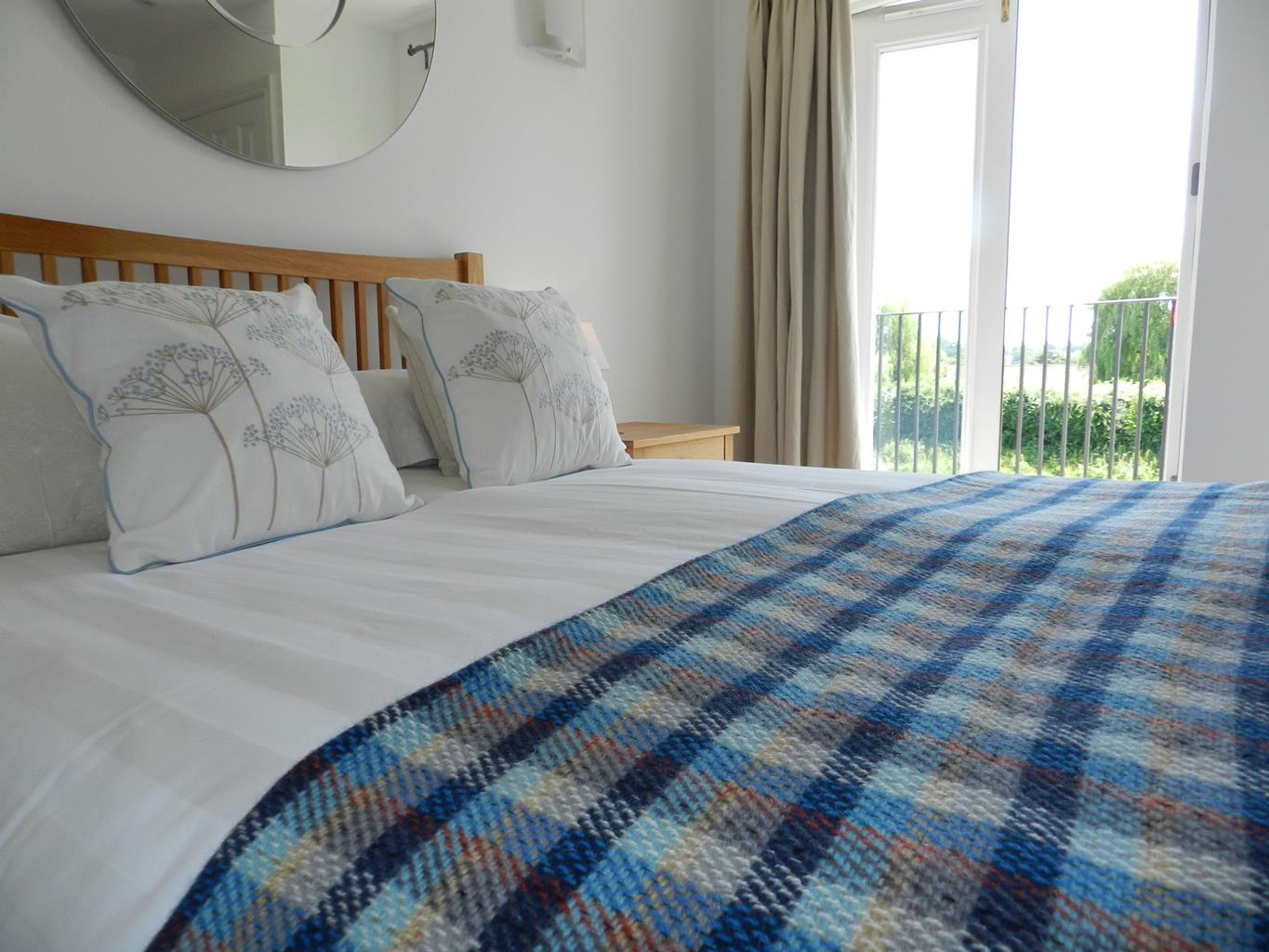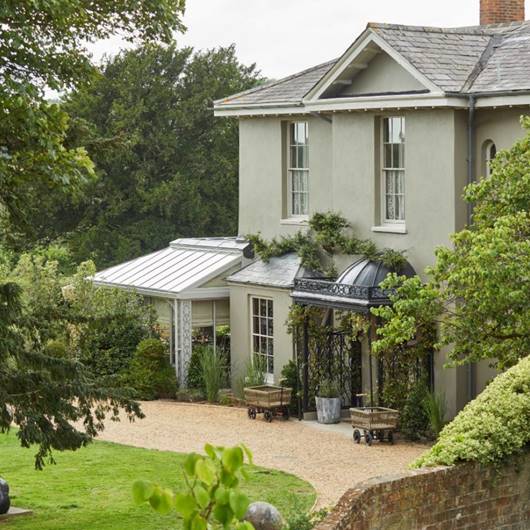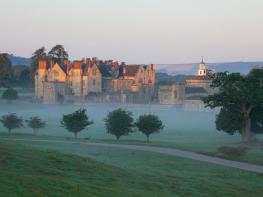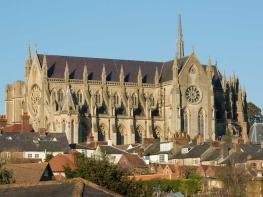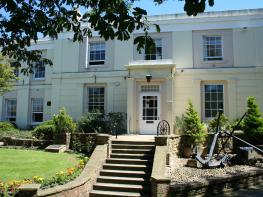Amberley Castle is idyllically set in the Sussex countryside, and boasts 900 years of history.…
Parham's stately park

Head for a magnificent Elizabethan house set in magnificent parkland before climbing high up to the breezy South Downs.
5.5 miles (8.8kms)
About the walk
The magnificent Elizabethan mansion of Parham House is one of the great treasures of Sussex, recalling the days of weekend house parties, servants below stairs and gracious living – a way of life that has all but disappeared. The wonderful setting, deer park and views of the South Downs enhance Parham’s beauty, and little has changed here since Tudor times.
It was in 1540, at the Dissolution of the Abbey of Westminster, that Henry VIII granted the manor of Parham to Robert Palmer, a London mercer. Years later, in 1577, his great grandson, aged just two and a half, laid the foundation stone of the present larger house, which was built to incorporate the old one. The little boy’s mother was a god-daughter of Elizabeth I, and it is believed the Queen dined here in 1593, on her way to Cowdray from Sutton Park in Surrey. The 875-acre (354ha) estate was sold in 1601 and then again in 1922, when it was purchased by the younger son of Viscount Cowdray. The new owners opened Parham to the public for the first time in 1948 – an unusual step in the lean, post-war years. The house has been open to the public ever since, and is now owned by a charitable trust.
Parham’s gardens consist of 7 acres (3ha) of landscaped ‘pleasure grounds’ and a colourful 4-acre (1.6ha) walled garden. When the house is open, large quantities of flowers are cut from the garden each week for the arrangements which brighten the rooms. The herb garden grows medieval and Tudor medicinal and culinary herbs, while the orchard contains traditional varieties of apple and other fruit trees. Parham means ‘pear tree settlement’, but the fruit most associated with Parham is the Golden Pippin Apple, which is thought to have originated here in 1629. Of particular note in the Park are the many ancient, mature and veteran trees. A veteran tree contains significant quantities of dead wood or decaying limbs. Several oak trees are over 500 years old, and rare lichens flourish on the bark. A distinctive feature of the Park is the abundant mistletoe growing high up in the lime trees.
You’ll see the house and Park from the top of the South Downs on this enjoyable circuit. Look out for the 18th-century dovecote when you walk through the Park. This has over 650 brick-built nesting boxes inside. Over the centuries, the pigeons would have provided the Parham household with a regular source of fresh meat, particularly during the winter months. Pigeon pie was a popular delicacy.
Walk directions
With the car park sign on the left, go forward to join a bridleway, which initially runs parallel to the road. Follow the path to a gate, cross a pasture to a second gate and follow the path as it descends quite steeply between trees and undergrowth. Ignoring a gated track on your right, keep ahead past rows of conifers. Join a track bearing left and soon turn right, passing alongside a line of trees, with a field on the right. Follow the track to reach a wooden gate leading out to the road by a house called Paygate. Turn right and then left along Clay Lane, passing Cootham Farm and Lower Barn to reach a junction with the A283. To visit Cootham and the Crown Inn, turn right.
Walk back along the main road past Clay Lane. Make for the entrance to Parham Park, pass a stone-built lodge and go through a gate leading into the deer park. Follow the drive and, when it curves gently to the left, join a waymarked parallel path on the right. Cross a pasture and look away to the south to take in a striking view of Parham House with the scarp of the Downs rising steeply behind it. On reaching a junction of drives head straight on, soon passing alongside a stone wall on your left with a lake beyond it. Continue through the gently undulating parkland and turn left when you get to the road by West Lodges. Pass a stone house and ignore a turning to Greatham and Coldwaltham on the right. Follow the lane down through the trees.
Pass a private car park on your right and head towards the dramatic scarp of the South Downs. Pass Rackham Road and follow the lane into the village of Rackham. Keep on the road as it cuts between fields to reach a junction.
Bear left here and, taking care, follow the busy and fast B2139 for about 75yds (68m). Turn right to join a bridleway and climb steeply, passing through a gate. Continue the steep ascent, crossing a farm track. Glancing back at intervals will reveal views of Parham Park in the distance and, away to the west, the meandering River Arun. The path curves to the right, and from this high ground much of the route of the walk can be seen. Amberley, with its imposing castle remains, is also visible from this lofty vantage point. Keep ahead to a bridle gate, ignoring a stile and gate over to your right, and join the South Downs Way.
Turn left along the South Downs Way ridge-top track and head east. Pass a trig point on the right and continue ahead across Rackham Hill. Parham House can be seen down to your left, while over to the right on a clear day you can spot the sea glinting in the sunshine. Pass through a belt of trees and continue to Kithurst Hill car park on the left.
Additional information
Bridleways, parkland paths, and drives and stretches of road
Elegant parkland and steep escarpment
On lead in Parham Park, in vicinity of B2139 and below Kithurst Hill car park
OS Explorer OL10 Arundel & Pulborough
Kithurst Hill car park
None on route
WALKING IN SAFETY
Read our tips to look after yourself and the environment when following this walk.
Find out more
Also in the area
About the area
Discover West Sussex
Divided from East Sussex back in 1888, West Sussex is so typically English that to walk through its landscape will feel like a walk through the whole country. Within its boundaries lies a wide variety of landscape and coastal scenery, but it is the spacious and open South Downs with which the county is most closely associated.
In terms of walking, you’ll be spoilt for choice. Studying the map reveals a multitude of routes – many of them to be found within the boundaries of the South Downs National Park – and an assortment of scenic long-distance trails leading towards distant horizons; all of them offer a perfect way to get to the heart of ‘Sussex by the sea,’ as it has long been known. If you enjoy cycling with the salty tang of the sea for company, try the ride between Chichester and West Wittering. You can vary the return journey by taking the Itchenor ferry to Bosham.
West Sussex is renowned for its many pretty towns, of course. Notably, there is Arundel, littered with period buildings and dominated by the castle, the family home of the Duke of Norfolk, that dates back nearly 1,000 years.
Nearby stays
Restaurants and Pubs
Nearby experiences
Recommended things to do
Why choose Rated Trips?
Your trusted guide to rated places across the UK
The best coverage
Discover more than 15,000 professionally rated places to stay, eat and visit from across the UK and Ireland.
Quality assured
Choose a place to stay safe in the knowledge that it has been expertly assessed by trained assessors.
Plan your next trip
Search by location or the type of place you're visiting to find your next ideal holiday experience.
Travel inspiration
Read our articles, city guides and recommended things to do for inspiration. We're here to help you explore the UK.

